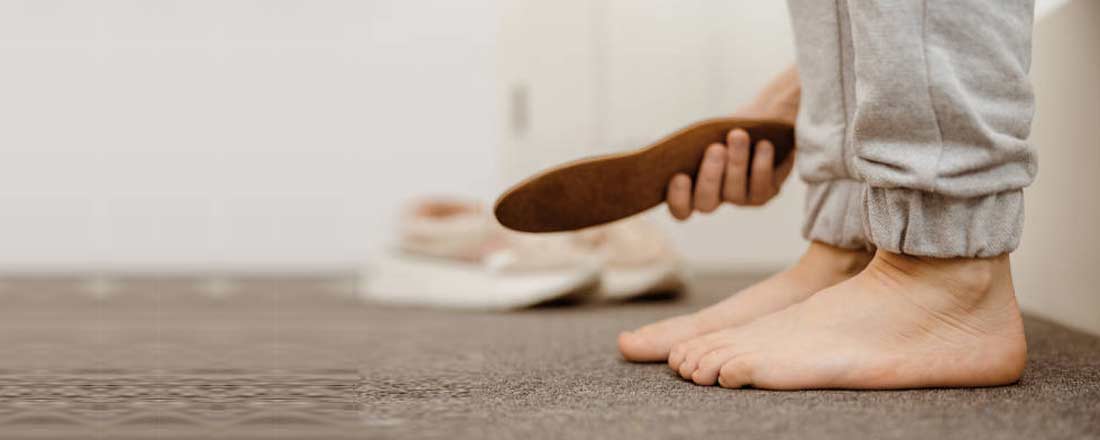Flat feet, or fallen arches, can significantly impact daily life by causing discomfort, and pain, and affecting overall mobility. Understanding the significance of flat feet and their influence on day-to-day activities is crucial in finding effective solutions.
What Causes Flat Feet?
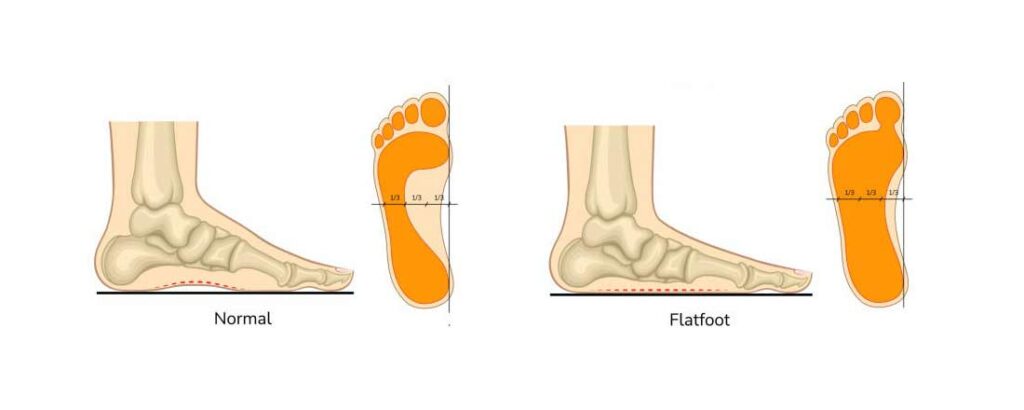
- Genetics and Family History
One of the leading causes of flat feet is genetics. Inherited traits and family history can play a significant role in an individual developing this condition. Understanding genetic predisposition can help individuals proactively address the issue.
- Weak Arch Muscles and Ligaments
Weak arch muscles and ligaments can also contribute to the development of flat feet. When these structures are unable to provide sufficient support, the arches can collapse, resulting in flat feet.
Injuries and Conditions Affecting Foot Structure
Injuries, such as fractures or sprains, and certain medical conditions, such as rheumatoid arthritis or tarsal coalition, can impact the structure of the foot and lead to flat feet.
- Signs and Symptoms of Flat Feet
Identifying the signs and symptoms of flat feet is crucial in obtaining an accurate diagnosis. These may include arch pain, foot fatigue, difficulty in standing on tiptoes, or feet that appear flat when standing.
Seeking Medical Advice
If flat feet symptoms persist or cause significant discomfort, seeking medical advice from a healthcare professional, such as a podiatrist or orthopedic specialist, is essential. They can provide a thorough evaluation and recommend appropriate treatment options.
Professional Diagnosis Methods
Healthcare professionals employ various methods to diagnose flat feet accurately. These may include physical examinations, walking analysis, X-rays, or in some cases, advanced imaging techniques like MRI scans.
The Role of Insoles for Flat Feet
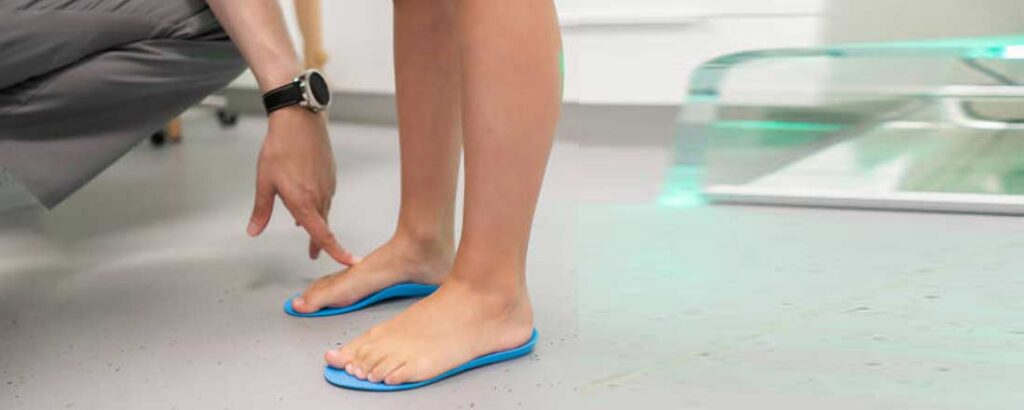
- An Overview of Orthotic Insoles
Orthotic insoles, specifically designed to address the needs of individuals with flat feet, can play a crucial role in providing necessary support, alignment, and comfort. These insoles for flat feet are specially crafted to provide biomechanical assistance to the feet.
How Specially Designed Insoles Can Help Flat Feet?
Specially designed insoles can help flat feet by supporting the natural arch, redistributing weight, and providing shock absorption. They work in harmony with the foot’s structure to alleviate pain and enhance overall foot function.
Understanding the Biomechanical Principles behind Insoles for Flat Feet
Insoles for flat feet work by correcting abnormalities in foot mechanics. By providing support to the arches and realigning the foot posture, insoles assist in optimizing the body’s overall biomechanics and reducing stress on various joints and muscles.
Types of Insoles for Flat Feet
- Cushioned Insoles
Cushioned insoles offer extra padding and shock absorption, making them suitable for individuals with mild to moderate flat feet. These insoles provide comfort and alleviate pressure on the feet.
- Arch Support Insoles
Arch support insoles are specifically designed to address the lack of support in the arch area. These insoles for flat feet assist in maintaining proper foot alignment, reducing pain, and enhancing stability for individuals with flat feet.
- Custom Orthotic Insoles
Custom orthotic insoles are individually tailored to fit the unique foot structure of the wearer. These insoles provide the highest level of support and correction for individuals with severe flat feet or specific foot abnormalities.
Choosing the Right Insoles for Flat Feet
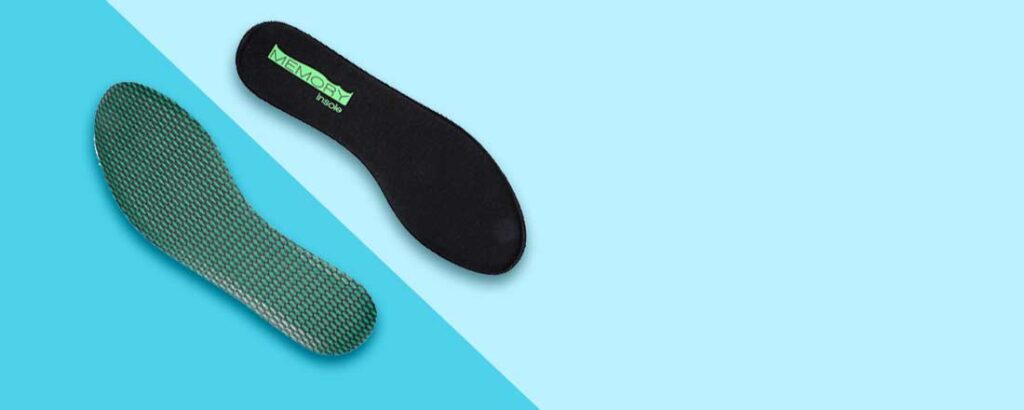
- Determining the Level of Arch Support Needed
The level of arch support needed may vary depending on the severity of an individual’s flat feet. Consulting with a healthcare professional can help determine the appropriate level of support required for optimal results.
- Considering Pronation and Gait Patterns
Analyzing pronation tendencies and gait patterns is crucial in selecting the right insoles. Pronation refers to the foot’s natural motion while walking or running and considering this factor ensures an accurate fit.
- Consulting with Healthcare Professionals
It is highly recommended to work alongside healthcare professionals, such as podiatrists or orthopedic specialists, when choosing the best shoe insoles. Their expertise can guide individuals in finding the most suitable options for their specific needs.
Benefits of Specially Designed Insoles for Flat Feet
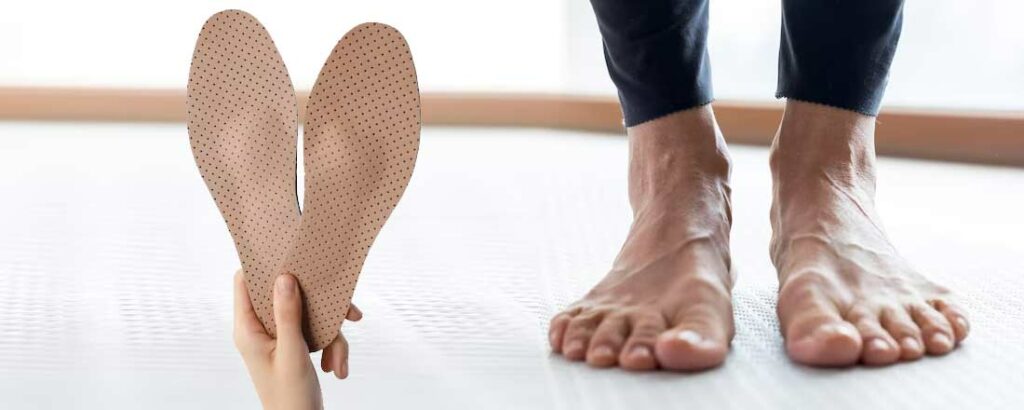
- Relieving Foot Pain and Discomfort
One of the primary benefits of specially designed insoles for flat feet is their ability to alleviate foot pain and discomfort associated with flat feet. By providing the necessary support, these insoles can significantly reduce strain on ligaments and muscles.
- Correcting Alignment and Posture
Specially designed insoles for flat feet help correct alignment and posture by supporting the natural arch of the foot. Proper alignment translates into better positioning of the knees, hips, and back, reducing pain and promoting better overall posture.
- Enhancing Shock Absorption and Stability
Insoles designed for flat feet enhance shock absorption and stability. By distributing weight evenly and minimizing the impact on joints and bones, they decrease the risk of sports-related injuries and facilitate more comfortable walking or running.
- Reducing Strain on Ligaments and Muscles
Specially designed insoles for flat feet reduce strain on ligaments and muscles by providing the necessary support and maintaining proper foot alignment. This can aid in relieving discomfort and preventing further injuries.
- Alleviating Plantar Fasciitis and Other Conditions
Insoles not only alleviate the pain associated with flat feet but also help alleviate conditions like plantar fasciitis, Achilles tendonitis, or shin splints that can occur due to the strain caused by the lack of arch support.
- Enhancing Overall Foot and Leg Comfort
By offering increased cushioning and improved foot alignment, specially designed insoles for flat feet enhance overall foot and leg comfort. Individuals can experience reduced fatigue and increased comfort throughout the day.
- Aligning the Body’s Kinetic Chain
Specially designed insoles for flat feet align the body’s kinetic chain, improving how different body parts function together. This alignment reduces stress on joints and muscles, helping individuals achieve better posture and movement.
- Supporting Correct Foot Positioning
Insoles designed for flat feet support correct foot positioning, which enhances overall gait mechanics. The improved positioning also helps address knee, hip, and back pain caused by improper foot function.
- Addressing Knee, Hip, and Back Pain
The correct alignment and posture provided by insoles can address knee, hip, and back pain caused by flat feet. The supportive nature of the insoles for flat feet helps distribute weight more evenly, reducing strain on these areas.
- Minimizing Impact on Joints and Bones
Insoles for flat feet minimize the impact on joints and bones by absorbing shock during walking or running. This feature reduces the risk of joint-related problems, making them ideal for individuals with flat feet engaging in physical activities.
- Distributing Weight Evenly While Walking or Running
By redistributing weight more evenly across the feet, specially designed insoles for flat feet reduce stress on specific areas of the foot and leg. This balanced weight distribution helps prevent overuse injuries and promotes more efficient movement.
- Preventing Sports-Related Injuries
The insoles offer enhanced stability during physical activities, preventing sports-related injuries. They provide additional support and cushioning, helping individuals with flat feet perform at their best while minimizing the risk of injury.
How to Use Insoles for Flat Feet Correctly?
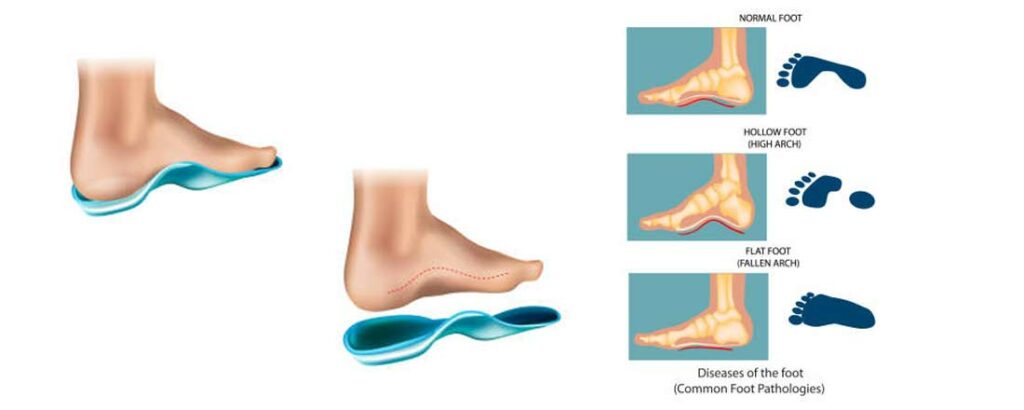
- Properly Fitting Insoles inside Footwear
To maximize the benefits of insoles for flat feet, it is essential to ensure they are properly fitted inside footwear. Insoles should fill the entire shoe space, providing complete support and alignment.
- Breaking in New Insoles
New insoles may require a break-in period to adapt to the foot and achieve optimal comfort. Gradually increasing usage time over a few days or weeks can help feet adjust to the new insoles.
- Maintaining and Cleaning Insoles
Regularly cleaning and maintaining insoles is crucial for their longevity and effectiveness. Following the manufacturer’s instructions for cleaning and storage can help extend their lifespan.
Combining Insoles or Flat Feet with Other Treatments
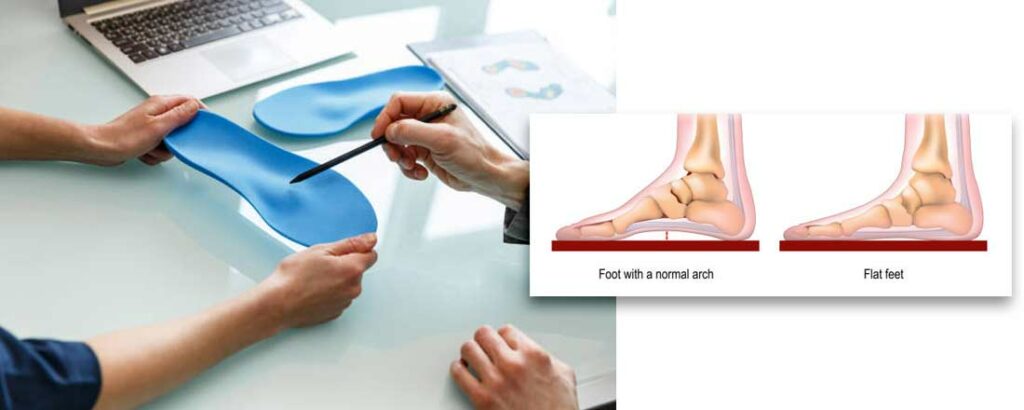
- Exercises and Stretches for Flat Feet
Incorporating specific exercises and stretches into a daily routine can help strengthen the arch muscles and improve foot function. Healthcare professionals can provide guidance on the most appropriate exercises for each individual.
- Physical Therapy for Strengthening Arch Muscles
Physical therapy, under the supervision of a qualified professional, can aid in strengthening arch muscles and improving overall foot function. This therapy complements the benefits provided by specially designed insoles.
- Seeking Footwear with Proper Arch Support
Choosing footwear with proper arch support is crucial in maintaining optimal foot health. Well-fitting shoes with built-in arch support can work in conjunction with insoles for flat feet to provide the necessary support for flat feet.
Frequently Asked Questions (FAQs)
1. Can Best Shoe Insoles Completely Cure Flat Feet?
While insoles can provide significant relief and support, they cannot completely cure flat feet. Insoles should be seen as a management tool to alleviate symptoms and improve foot function rather than a permanent solution.
2. How Long Does It Take To See Results From Using Insoles For Flat Feet?
The time required to see results from using insoles can vary depending on individual factors. Some individuals may experience immediate relief, while for others; it may take a few weeks to notice a difference. Consistency and adherence to recommended treatments are essential for optimal results.
3. Can Men’s Shoe Insoles Be Used By People of All Ages?
Insoles can be used by people of all ages, from children to older adults. However, it is important to consult with healthcare professionals to ensure the appropriate insole type and level of support is selected for each age group.
4. Are Insoles for Flat Feet Suitable for All Types of Footwear?
While insoles can generally be used with most types of footwear, compatibility can vary. It is important to consider the insole thickness, shoe size, and intended use of the footwear. Consulting with experts or following manufacturers’ guidelines can help ensure compatibility.
5. Are Custom Orthotic Best Shoe Insoles Worth the Investment?
Custom orthotic insoles can be a worthwhile investment for individuals with severe flat feet or specific foot abnormalities. These insoles provide personalized support, correction, and maximum comfort, making them highly beneficial for those with complex foot conditions.
Conclusion
The insoles for flat feet offer a multitude of benefits for individuals with flat feet. By alleviating foot pain, correcting alignment and posture, and enhancing shock absorption and stability, these insoles unlock the power to improve overall foot function and quality of life. Remember, a holistic approach that combines insoles with exercise, therapy, and proper footwear is key to addressing flat feet effectively.
